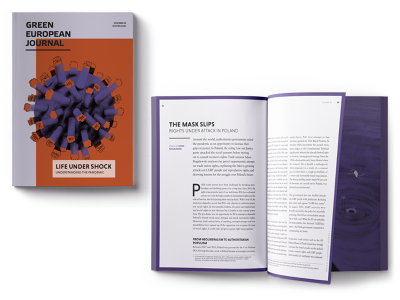Since entering government in summer 2020, the Green Party has the opportunity to shape policy in Ireland and the response to COVID-19, but many potential pitfalls lie in its way.
Covid-19 reached Ireland in February and a national lockdown was implemented in late March. The disease spread rapidly but it was brought under control by the lockdown which continued until late May. Ireland has a younger population compared to other European countries but years of health underfunding meant that it could easily have been overwhelmed in a surge. This concern was at the forefront of the government’s thinking, and its explanation for the strict and prolonged lockdown.
For much of the lockdown, Ireland had a caretaker government. The outgoing minority administration had governed with wide support from the opposition and achieved public satisfaction ratings of more than 70 per cent, but the general election in February produced a fragmented parliament and protracted talks followed for over 100 days.

With 12 seats, the Greens were at the centre of many of the potential government permutations. While the party leadership was always clear about its wish to enter government, a vocal minority of members was not. Indeed, their public pronouncements may have helped the party achieve many of its ambitions in negotiations. The final programme for government was agreed in June and the new administration took office. The coalition is led by Fianna Fáil (centre-right) along with Fine Gael (centre-right) and the Green Party. The Greens secured three positions in the government including the transport portfolio, an agreement on a major investment programme, and notable improvements in social services.
The programme was widely acknowledged as a good deal for the Greens but its first few weeks in government got off to a choppy start. Several prominent members left the party citing disappointment with the agreement. In line with party rules, a leadership contest was initiated which saw the deputy leader challenge the leader in a largely good-natured debate focused on policy. The leadership was confirmed, with Eamon Ryan staying on as leader and Catherine Martin as deputy leader. Green ministers were not embroiled in the many controversies that bedevilled the government’s first few months in office. They remained in the background, and, worryingly for the party, the first autumn opinion poll showed a sharp drop in support.
The Greens do not hold frontline Covid-19 portfolios such as health and education, making visibility a challenge.
However, the Green Party is having a clear impact on government policy. October’s 2021 national budget plans the largest ever spend by an Irish government. The major increase in capital investment includes a much stronger emphasis on public transport, walking, and cycling, stemming from Green preferences. A well-flagged increase in the carbon tax and disincentives for the purchase of diesel and petrol cars were announced. These policies all fall within the expected orbit of a Green party in government. Perhaps more significantly, Green ministers secured important social spending commitments and were quick to claim those policies in the media.
With the second wave of the pandemic, restrictions on hospitality and travel have been imposed. The Greens do not hold frontline Covid-19 portfolios such as health and education, making visibility a challenge. The party needs to stay in the political spotlight. Learning from the fate of previous small parties in government in Ireland, it must make sure to get the credit for Green policies and deliver on its promises.

